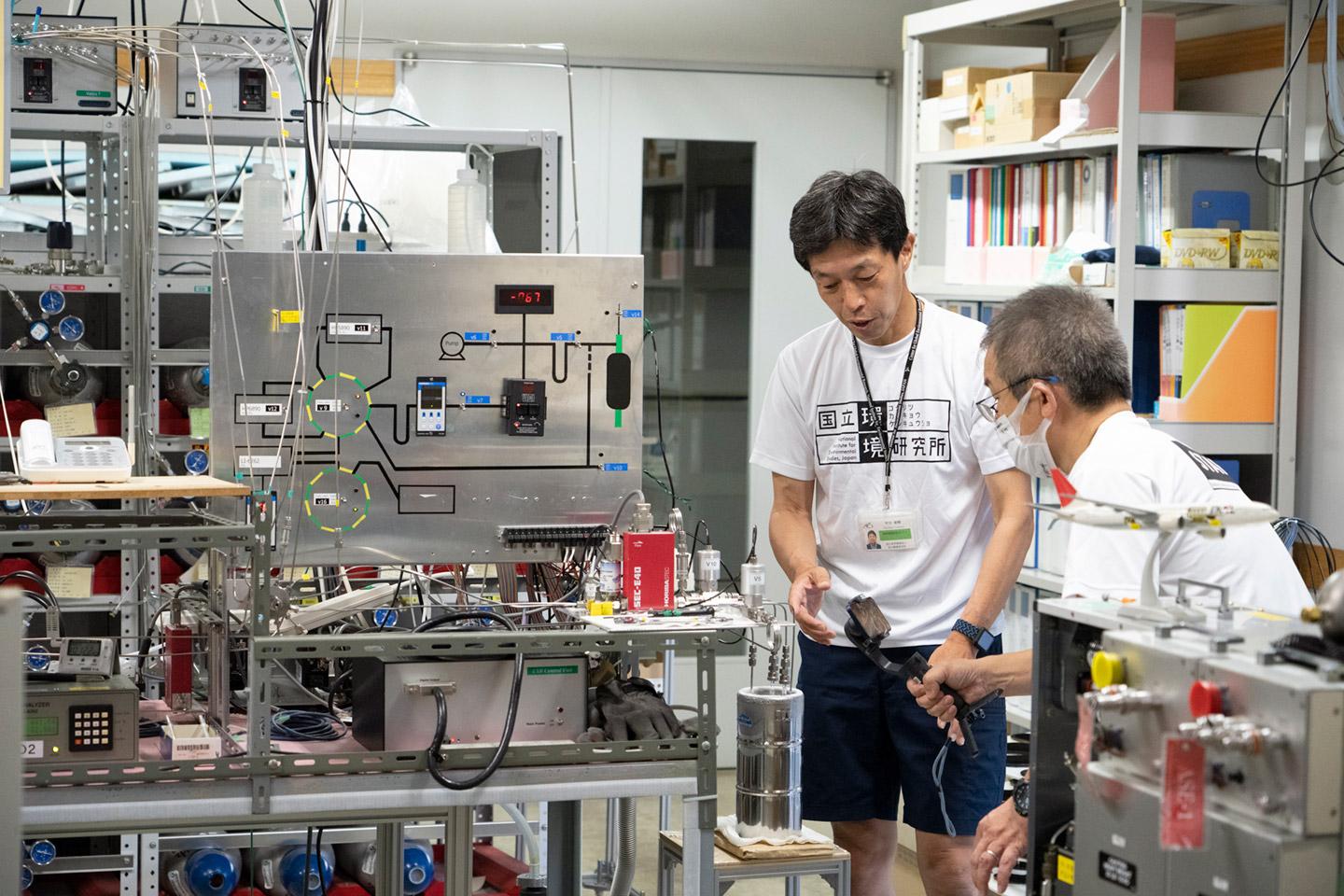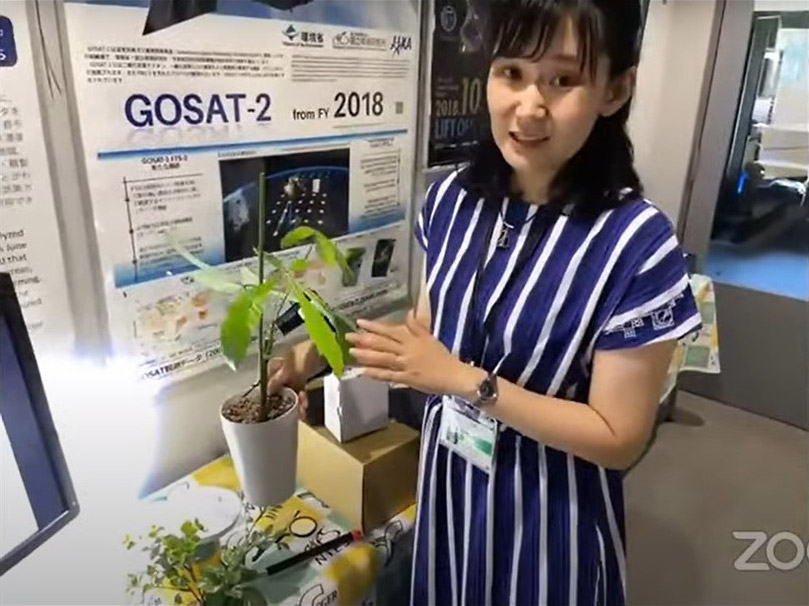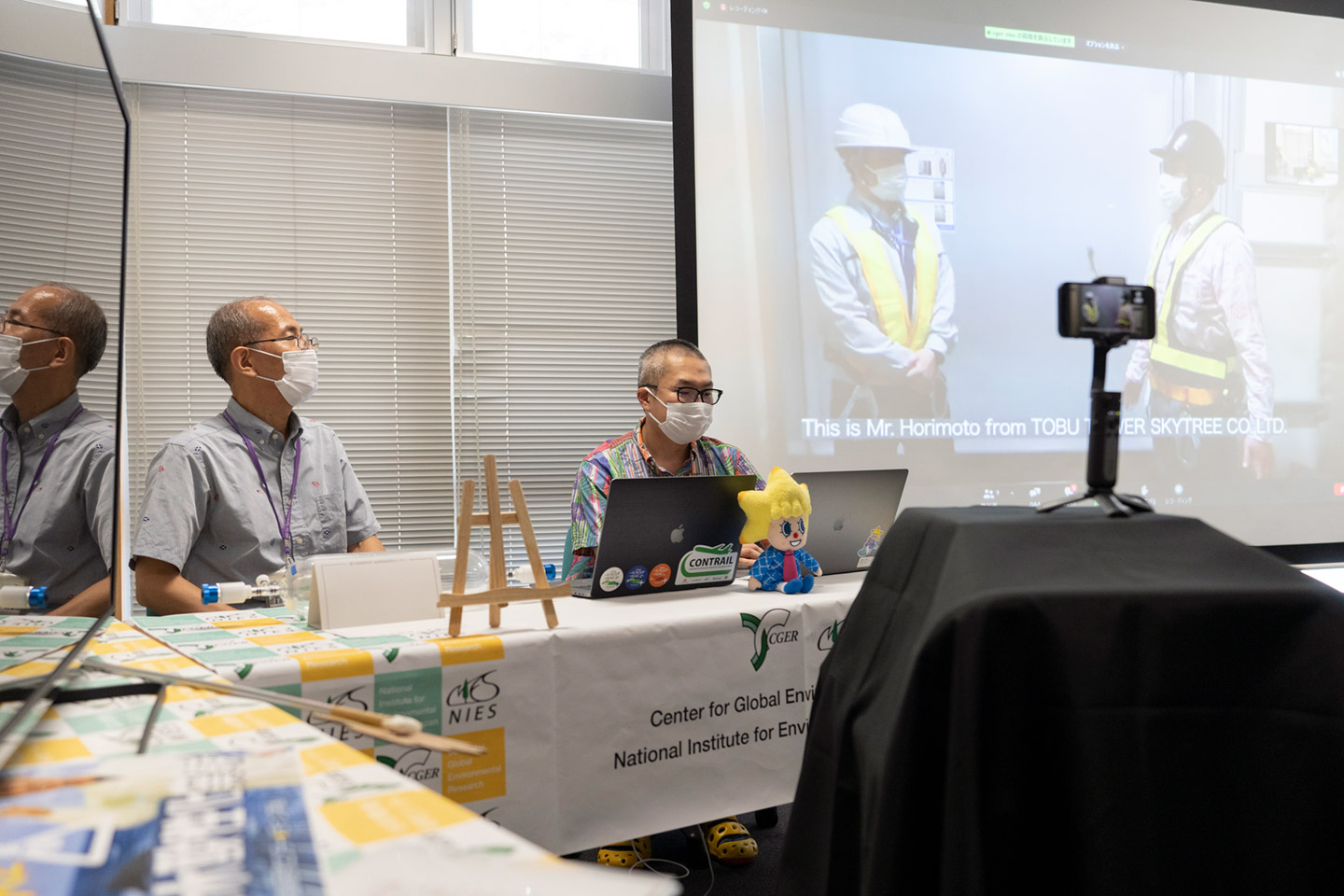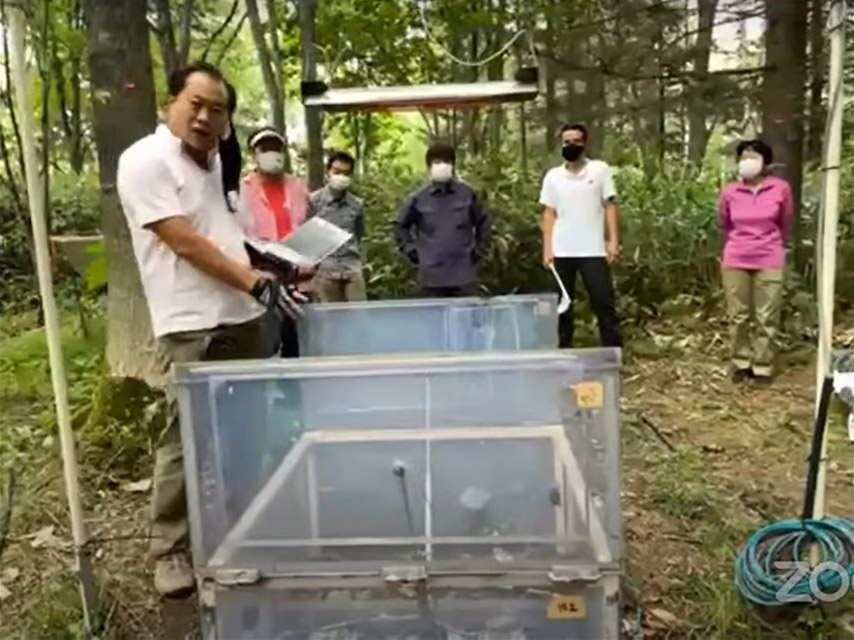NIES Summer Open House Event Online lab tour – a new challenge in these COVID times!
This year’s NIES Summer Open House Event was held online on July 17 due to the COVID-19 pandemic. An online event of this scale was a new challenge for us at the Earth System Division, CGER, too. But I think that I can speak for all when I say that thanks to the excellent organization, planning, and the enthusiasm of those involved, we could bring this event to a great success.
The English virtual lab tour, “A sneak peek into our global environmental monitoring activities” was held from 15:30 on July 17. Fifteen participants between the ages of 4th graders and graduate students who had applied beforehand were selected by lottery to participate in the virtual lab tour by Zoom. We even had one participant from overseas! We visited four of our laboratories: the Greenhouse Gas Measurement Laboratory (Tsukuba), Satellite Remote Sensing Laboratory (Tsukuba), Tokyo Skytree (Tokyo) and finally the Teshio Experimental Forest (Hokkaido).
In our first visit, Dr. Machida, Head of the Office for Atmospheric and Oceanic Monitoring, explained how air was collected in glass bottles from all over the world using ground-based stations, aircraft, and ships, and showed us the measuring equipment that are loaded on Japan Airlines (JAL) planes in the CONTRAIL project. Perhaps next time you take a JAL flight, you might be on a plane that carries our measuring equipment! Dr. Machida also explained how the concentrations of atmospheric greenhouse gases in the air samples, brought back to Tsukuba, were analyzed, and demonstrated the analytical equipment.

In the next lab, Dr. Noda, Senior Researcher from the Satellite Remote Sensing Section, introduced the GOSAT and GOSAT-2 satellites called Ibuki and Ibuki 2. Next, she demonstrated with a small experiment how the GOSAT series satellites, which were originally designed to observe GHGs, could be used to also observe chlorophyll fluorescence from plants. Two plants were examined under LED light using a near-infrared (NIR) camera and a special chlorophyll fluorescence filter. Interestingly, chlorophyll fluorescence could be observed from only one plant. Why? Because that plant was a real plant, while the other was a fake one! So, the fake plant, of course, does not have photosynthesis and thus, it did not emit light. With this easy-to-understand experiment, Dr. Noda demonstrated how GOSAT could monitor plant photosynthesis by observing chlorophyll fluorescence.

The third lab introduced was the Tokyo Skytree. Did you know that this tower is not only a broadcasting tower and a sightseeing spot to get a splendid view over Tokyo, but it also houses our monitoring equipment to measure the concentrations of greenhouse gases? Unfortunately, due to the state of emergency issued for Tokyo from July 12, our researchers could not be at the actual site in Tokyo, but instead, they explained their research from Tsukuba using prerecorded video and other materials. Dr. Terao, Senior Researcher at the Global Carbon Cycle Research Section, and Dr. Tohjima, Head of the Environmental Chemodynamics Section, showed us the “secrets” of Tokyo Skytree: where the air intake tubes were placed on a special deck 90 m below the observation deck, how they were connected to the analytical equipment in a “secret room” inside the tower, how the urban air samples were collected in glass flasks, and how the greenhouse gases and oxygen analyzers worked with extremely high precision.

Our last visit was to the Teshio Experimental Forest in Northern Hokkaido by Zoom. Our researcher, Dr. Liang, Head of the Global Carbon Cycle Research Section, went to the site in advance and introduced together with his Hokkaido colleagues their continuous monitoring of soil respiration using an automated chamber system. By warming up the soil using heater lamps, they simulate global warming and look at how soil carbon changes due to climate change. After this demonstration, Dr. Takahashi, Head of the Office for Terrestrial Monitoring, showed a video and explained the long-term observation of terrestrial carbon balance carried out at the Teshio CC-LaG site using a 30 m tall tower. The video was taken by a drone, which gave us a unique view from above that cannot usually be seen. Seeing the research environment at this height and the vast area of the research site was very impressive!

The Zoom participants contributed with excellent questions to the researchers. Questions such as what the difficulties were in measuring greenhouse gases, what the most surprising research finding was, whether GOSAT could measure photosynthesis and CO2 absorption by algae and plankton, how our data could be used to get people change their behaviors to achieve GHG reduction, and what the relationship between CO2 concentrations and solar-induced chlorophyll fluorescence (SIF) was, were asked. Unfortunately, there was not enough time for more questions and interaction, but let’s hope that the Zoom participants, and also the YouTube viewers, had a great time!
Thanks to all who made this event possible through careful planning, preparation, and some last-minute improvisions, we were able to give you a glimpse into our research activities. We hope to see you again at our next Open House Event, and that time, hopefully in person when the COVID-19 pandemic has come to an end!
Those, who were not able to see us on July 17, can view the recorded video of “CGER virtual lab tour: A sneak peek into our global environmental monitoring activities” on the NIES YouTube Channel(https://www.youtube.com/watch?v=fPlpP7rECs0).

